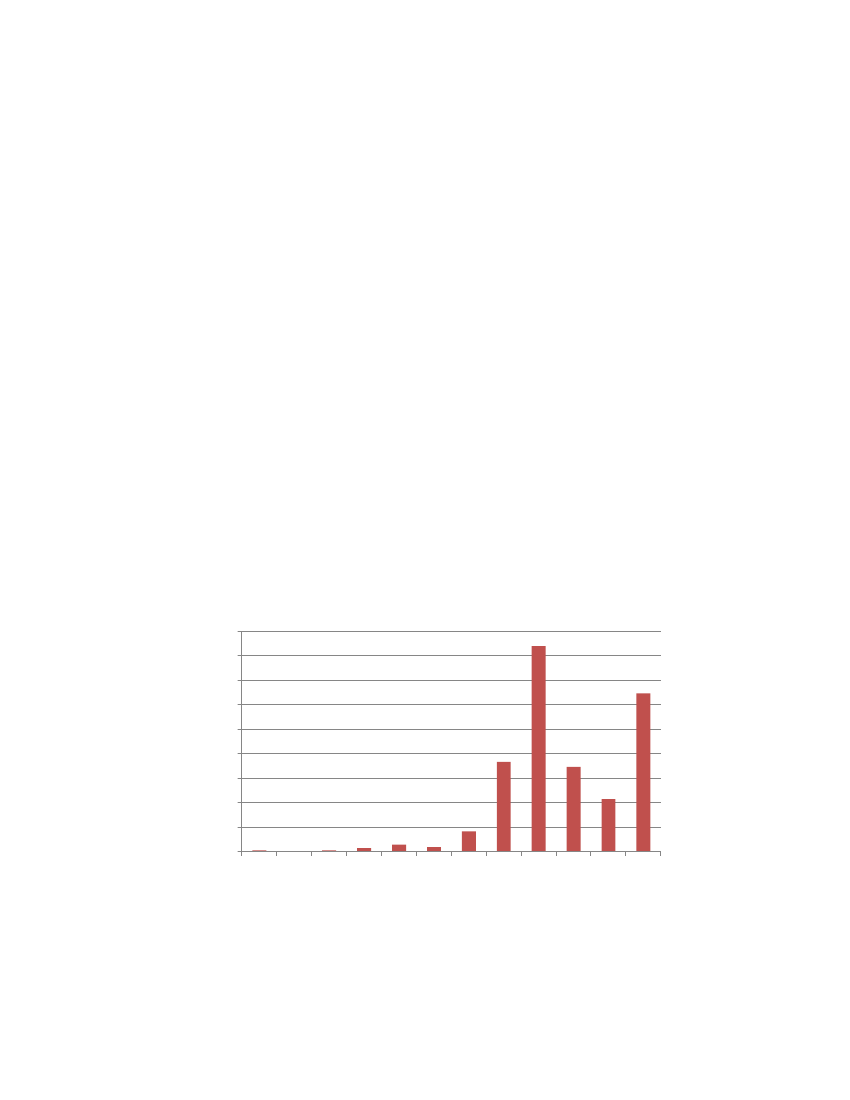
FACTS AND FIGURES
Market statistics
Denmark is worldwide recognized for the progress brought to Wind Energy over the last 35 years. Back to 1979
Vestas started selling and installing a 30kW with a 10 meter rotor turbine. A similar turbine of what today is a
husstandsvindmøller (small wind). We are all familiar of the successful story of Vestas. In very brief, it was a
mix of driving-force minded people, government support and access to foreign markets driving the ascent to a
worldwide market leader in the wind industry. Within the last five years the small wind industry started to
grown thanks to government support (see fig. 1). In 2010 the Danish legislation established a support program
(Net Metering) for household supply with solar, wind and biomass granting up to 6kW systems. The support
scheme was phased out in 2012, contributing to a shocking decreasing of 41% in sales in 2013. With no
framework, since 19
th
November 2012 all sales have been on stand-still. New legislation was prepared but
delayed by disputes between Danish government and EU Commission. On February 2015 a Feed in Tariff (FiT)
program was established with a significant positive support to the market (see Fig.1). On date 26
th
October -
2015, eight months later, an overall of 323 small wind turbines were installed. These trends are clear, the small
wind industry needs financial support to be economically viable. The trends are also showing that it is needed a
national market stability rather than continuously stop-n-go government support strategies. Today Danish
manufactures are becoming solid market leaders and have the vision to scale up by approaching foreign
markets.
450
400
350
300
Units/yr
250
200
150
100
50
0
Small Wind installed
-
Energinet.dk
2004 2005 2006 2007 2008 2009 2010 2011 2012 2013 2014 2015
Figure 1: Market trends over the past 11 years, number of small wind installation per is shown